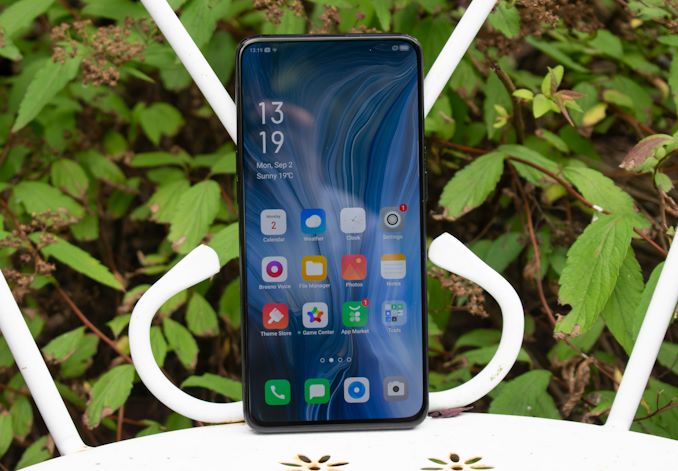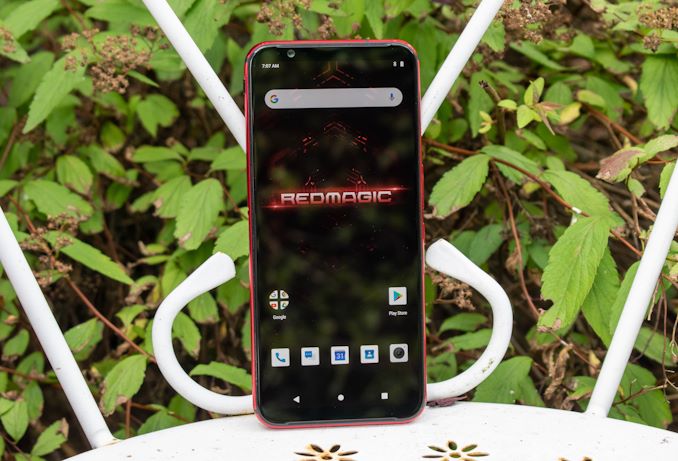The Snapdragon 855 Phone Roundup: Searching for the Best Implementations
by Andrei Frumusanu on September 5, 2019 8:30 AM ESTTop Devices - China & Gaming Contenders
Aside from the well-known phones in western markets, we’ve seen Chinese vendors have quite large success in European and other global markets. These devices are less prevalent in the US, however they can offer some unique value and differentiating experiences compares to the usual brands.
Xiaomi Mi9
Xiaomi Mi9 family of phones were among the first Snapdragon 855 devices to be released, hitting the streets at the same time as Samsung’s S10 series. Xiaomi in particular seems to be a leading vendor cooperating very closely with Qualcomm in defining the experience of their devices.
What stands out for the Mi9 is that when it was released, it came at an incredible price-point of only 449€, vastly undercutting other offerings with the high-end Snapdragon 855. Today the Mi9 can be had for as little as 376€, which remains one of our top picks at this price point.
The Mi9 is on the smaller side when it comes to form-factors, and it’s the smallest device amongst today’s roundup, even though by any means it can still be considered a big phone by traditional standards. The build quality of the phone stands out – it’s a very solid yet lightweight device that punches far above its weight and price. Xiaomi still employs a triple-camera setup which puts it on par with other flagship devices this year. The camera quality also manages to easily compete with that of other devices such as the OnePlus 7 Pro – not a big surprise as it’s among the many devices this year using the popular IMX586 camera sensor. In fact, all devices on this page use the same sensor.
Compromises for the Mi9 fall in aspects such as only having a mono-speaker and its battery life being only about average – two well worth compromises for an otherwise incredibly attractive price-to-performance package.
Full review to follow in the next weeks.
OPPO Reno 10x Zoom
OPPO’s main focused for the last several years has been the Chinese market where they’re incredibly successful in, being one of the top smartphone vendors there. Recently, OPPO has decided to enter western market and this year has launched its flagship device sin various markets in Europe. The OPPO Reno series is marked as also having distinguished designs with bezel-less full-screen experiences. The display panel remains an OLED, but unlike the OP7Pro, this remains a 1080p 60Hz unit. We find a similar slide-out front-camera mechanism, just this time around it’s a wedge design instead of the rectangular slide-out on the OP7Pro.
Key characteristics of the OPPO Reno 10x zoom is basically spoiled by the device’s name: It has an augmented telephoto module capable of up to 10x hybrid zoom (6x optical) thanks to the sensor being laid out in a 90° angle and looking out the back of the phone thanks to a mirror prism. It’s the same kind of mechanism that Huawei used on the P30 Pro, but has the same issues of not being that particularly useful in everyday photography. The phone also employs wide-angle and ultra-wide-angle modules, and seemingly is actually able to provide a better image capture experience than say the OP7Pro, even though having the same or very similar sensors all whilst having the same SoC chipset for processing.
Full review to follow in the next weeks.
Xiaomi Black Shark 2
In the last year or two we’ve seen increased popularity in so called “gaming phones”. The design of these smartphones is straight out of the book of laptop manufacturers who offer specialized “gaming laptops” that are characterized by their unmistaken “gaming design accents” – for a lack of a better description.
Xiaomi last year with the original Black Shark was among the first to offer such phones, and this year we saw the follow-up with the Black Shark 2. The phone’s key differentiators here is that it’s offering a more “robust” design as well as a hardware switch that puts the phone in a dedicated gaming mode with a different software launcher optimized for a gaming experience, separating it from the more vanilla Android experience that the phones ship with.
Hardware wise, things are very similar to the Mi9 and the camera employs the same main sensor and telephoto lens as on its sibling device. Differences with the gaming design is that Xiaomi is employing dual front facing speakers.
The one aspect you’d expect gaming phones such as the Black Shark 2 to be optimized for is their thermal dissipation design, offering better SoC cooling and thus able to deliver long-term gaming performance. Unfortunately the Black Shark 2 didn’t fare very well in this regard and it’s among the weakest phones we’ve come to test when it comes to thermal stress performance.
Full review to follow in the next weeks.
ZTE Nubia RedMagic 3
Another device that can be strictly put in the category of “gaming phones” such as the Black Shark 2 is ZTE’s Nubia RedMagic 3. This might come out of the blue for most readers as many will have no heard of the device, however it offers some very interesting hardware features.
It offers a 1080p 90Hz screen which ticks off this aspect of a gaming phone. ZTE offers the same popular hardware switch on the phone which puts the device into a dedicated gaming mode with custom app launcher.
We’ll be covering the device in more detailed fashion in a dedicated review, but the most interesting aspect of the device is the fact that it has an actual fan in it. Yes you’re read that right, the phone actually has a small active cooling fan along with air intake and exhaust – something I definitely wanted to put through our GPU testing methodology to see if actually makes any difference and helps with prolonged gaming performance.
Full review to follow in the next weeks.














47 Comments
View All Comments
tuxRoller - Friday, September 6, 2019 - link
?Qualcomm is unusually good in this area.
MrCommunistGen - Thursday, September 5, 2019 - link
Interesting overview. I like that there are a lot of explicit comparisons between devices -- which is admittedly the purpose of a piece like this.I know you already do a lot of work for reviews and there's a LOT of data with a roundup with this many devices, but I have a request:
Battery Capacity Normalized Battery Life.
It would help illustrate platform efficiency vs battery size.
StormyParis - Friday, September 6, 2019 - link
What about with a case...pse - Friday, September 6, 2019 - link
Hi, Andrei, excellent article, as usual. One question, perhaps I missed this in the article, but are the figures for the S10+ Snapdragon and Exynos the ones from the original S10 article, or have you retested it with the latest updates?Cheers!
edsib1 - Saturday, September 7, 2019 - link
It doesnt look like you are using the phones various gamespace modesMy Oppo Reno 10x Zoom scores like your, but in gamespace mode it gets scores around 25% higher.
Performance - 10564
Web Browsing - 8257
Video Edit - 6429
Writing - 13638
Photo - 22386
Data - 8118
antifocus - Sunday, September 8, 2019 - link
Very nice to see more Chinese manufacturers coverage.tygrus - Monday, September 9, 2019 - link
I would like to see more user controls to limit performance and allow better battery life. Some games hog CPU & GPU for no reason (static city/castle not fps), if I can force them to 15fps instead of 60fps then may be I can avoid the pocket warmer/fire-starter. Change peak MHz of the big cores or set an average power used over short to long term (30 seconds / 5 minutes / 1 hour). I don't want sudden power saving once battery is <20%. Better option if I can set the aim for 12 hours use at the start of the day and have the device limit power from the beginning. More RAM can enable users to keep more apps & data in memory to avoid the slower app startup cycles. I thought 3GB RAM would be great 4 years ago but that was quickly used up by larger OS updates & larger apps. An older phone had just 8GB storage which was swallowed up OS and a few apps.It's frustrating that not all the phones you mention are available in Australia & other countries. Grey imports are possible but do you risk getting a 2nd hand phone with no warranty? OnePlus models and Samsung Galaxy S10e with 8GB RAM are not available in Australia.
peevee - Thursday, September 12, 2019 - link
"Differences in system performance between devices with the same hardware chipset basically boil down to one aspect: software."You forgot Flash and RAM choice.
peevee - Thursday, September 12, 2019 - link
"Finally, in the overall score, the ZTE RedMagic 3 comes at the top alongside the Galaxy S10"In your list it is S10+. These are very different devices, and you cannot infer the performance of S10 from S10+.
peevee - Thursday, September 12, 2019 - link
GPU "performance" - test after test of OFF SCREEN "performance". Does anybody play off screen? Show the real thing, so everybody would see the real cost of those useless extra-invisible pixels, and real advantage or lack of thereof of "90fps" and "120fps" - COMBINED with the battery life effects of all these!